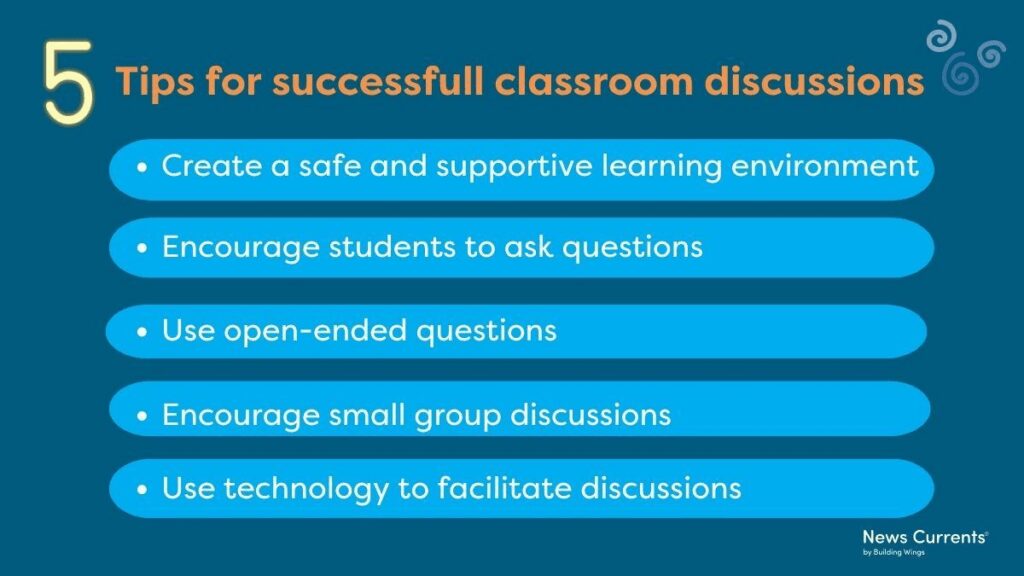How to Develop Critical Thinking Skills in Students by Discussing Current Events
While critical thinking skills are woven throughout the K-12 experience, one of the best ways for students to learn how to analyze facts and form opinions is through class discussion. And for educators looking for strategies for how to develop critical thinking skills in students, current events articles can provide learners with the opportunity to practice and develop these skills.
Whether they’re debating the pros and cons of social media, the principles of freedom of speech, or the urgency of climate change, students will gain direct experience in assessing the validity of information in the news, connecting that information in logical ways, trying on varying perspectives, and communicating conclusions.

Educator Tips for Discussing the News
Some teachers shy away from facilitating class discussions, fearing that the conversation may become controversial. Having students share differing opinions and alternative ways of viewing the same information is not only a catalyst for developing critical thinking skills but is also a way to facilitate engaging classroom discussions. Using ground rules or a framework to ensure discussions are respectful will help to create a safe and supportive learning environment.

How to Develop Critical Thinking Skills in Students
- Create a safe and supportive learning environment. Before class discussion begins, it’s essential to establish foundational expectations for group behavior. Invite students to contribute their ideas and post them in a place where everyone in the class can easily refer to them. Encourage principles such as:
- Listening actively and respectfully
- Having an open mind
- Criticizing ideas, not individuals
- Avoiding speculation, assumptions, and stereotyping
- Creating space for everyone’s voice to be heard
- Encourage students to ask questions. Asking open-ended questions can sometimes be more productive than arguing a perspective. When students want to say, “I disagree” or “You’re wrong,” encourage them instead to ask, “Why do you think that?” or “Can you please explain a little more what you mean when you say X?” Approaching one another from a place of curiosity rather than judgment helps students practice empathy and open-mindedness.
- Ask open-ended questions.
- Any question posed, whether from a student or the teacher, should be as unbiased and open-ended as possible. Instead of saying, “Don’t you think social media is bad?” reframe the question objectively: “What are some of the drawbacks of social media?”
- Avoid asking questions that can be answered “Yes” or “No.” Use “How” and “Why” questions to encourage students to think more deeply and develop a more nuanced response.
- Allow for multiple perspectives. Say, “What are other ways to approach this problem?” or “What might someone with a different perspective say about this?” Model curiosity and a desire for understanding rather than judgment.
- Give students “think” time. Thoughtful responses require a moment of reflection. Be comfortable with periods of silence.
- Use small groups. If you feel your class is too big to have a single productive conversation, consider putting students in small groups. This creates an opportunity for quieter students to speak up and makes it easier for everyone to participate equally. In some cases, it might be beneficial to begin a class discussion in small groups before joining together as a larger community for conversation. Students will have had time to think about the issue, formulate their opinions, and articulate their ideas.
- Use technology. There are many ways to incorporate technology into class discussions. Here are a few suggestions:
- Online discussion forums. In your LMS or other online space, provide a platform for students to post their thoughts and ideas in an asynchronous discussion. Tell students that they have to refer directly to an idea from another student’s post in their own writing to ensure true discussion is happening. Remind students that the same principles apply online as they do in person: be respectful; argue with ideas, not people; and avoid assumptions, stereotyping, and speculation.
- Polling and quizzing tools. This can be a fun way to get a class discussion started. Using tools such as Kahoot or Mentimeter can help you gauge students’ understanding and thinking about a topic and adjust instruction in real-time.
- Collaborative documents. Working collaboratively on platforms such as Google Docs can foster collaboration and discussion in the moment.
Sources of News Articles for Students to Spark Discussion
A survey conducted by the Association of American Colleges and Universities found that 93% of employers value critical thinking skills more than a college degree. In today’s world, where we’re bombarded by information that may or may not be true, it’s essential that students learn how to identify news sources, analyze information, evaluate arguments, make informed decisions, and learn how to respectfully share opinions.
While educators can rely on newspapers and news programming to find news articles that spark discussion and critical thinking, curated sources such as News Currents offer a curated source of news articles for students because their stories are handcrafted to emphasize background knowledge, vocabulary in context, and critical thinking skills. Students are invited to reflect about what the news means to them, building empathy and understanding of multiple viewpoints.

